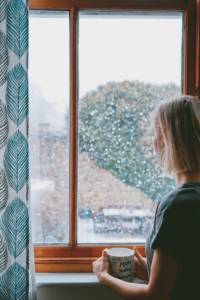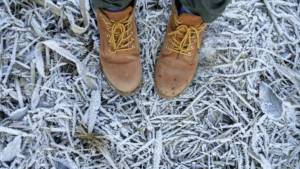If you are like me at all, you may start to feel down as fall turns to winter, especially after the holidays, when the cold, dreary weather seems to drag on and on. Everything dies off, the leaves fall, and it’s harder to get outside. It is normal to have a low day now and then, but if you are experiencing multiple days in a row of lethargy, depression, or have a lack of motivation to go about your normal tasks, it may be more than just a low day.
It’s possible you could be suffering from Seasonal Affective Disorder, also known as SAD.
The winter blues.
 Lauren Staley, Lead Therapist on our Avery campus says, “The winter blues can be a real struggle. We not only have cooler weather while nature starts to wither, but we also have less natural light with shorter days.” SAD typically begins in late fall and early winter and can last through the winter months, sapping your energy and making you moody.
Lauren Staley, Lead Therapist on our Avery campus says, “The winter blues can be a real struggle. We not only have cooler weather while nature starts to wither, but we also have less natural light with shorter days.” SAD typically begins in late fall and early winter and can last through the winter months, sapping your energy and making you moody.
Symptoms of SAD can include feelings of depression, losing interest in activities that usually bring you joy, changes in appetite or weight, cravings for carbohydrates, difficulty concentrating, changes in sleep habits, feeling sluggish or moody, and having low energy. In its most serious forms, SAD can turn in to a more severe depression with thoughts of death or suicide.
The causes and symptoms of SAD.
Lauren says that lack of light can affect many things in the body, leading to SAD. Less natural light can cause dips in serotonin, a neurotransmitter that regulates mood, disruption in your body’s circadian rhythm, the body’s internal clock that controls sleep-wake cycles, and can alter your levels of melatonin, a hormone associated with both mood and sleep.
According to the Mayo Clinic, you could have an increased risk of Seasonal Affective Disorder if there is a history of depression in your family or you live farther from the equator. SAD also tends to affect women more than men, and younger ages more than older. SAD can become serious, so be on the look out in yourself and those around you for signs of a more serious depression.
When to seek help.
Signs of a more serious disorder include social withdrawal, problems at school or work, substance abuse, anxiety, an eating disorder, or suicidal thoughts or behaviors. Again, it is normal to have a low day here or there, but be aware when the above symptoms become the norm. It is especially important to get help if your sleep patterns are affected, you are drinking more alcohol, you have serious changes in appetite, or you are having suicidal thoughts.
 Medication, light therapy (phototherapy), and psychotherapy can help. The more you can be in the sunshine the better, so bundle up, take a walk, or just sit outside on the patio for a bit and soak up that Vitamin D. And it’s always a good idea to get exercise!
Medication, light therapy (phototherapy), and psychotherapy can help. The more you can be in the sunshine the better, so bundle up, take a walk, or just sit outside on the patio for a bit and soak up that Vitamin D. And it’s always a good idea to get exercise!
Lauren says, “If you find yourself unable to shake depressive feelings during the change in seasons, be sure to seek the help of a health professional to see if your “winter blues” could be more related to Seasonal Affective Disorder or Depression. Don’t ignore your symptoms and take action! Embrace a healthy lifestyle and find some joy this winter!” Because, as we all know, the sun WILL shine again.



